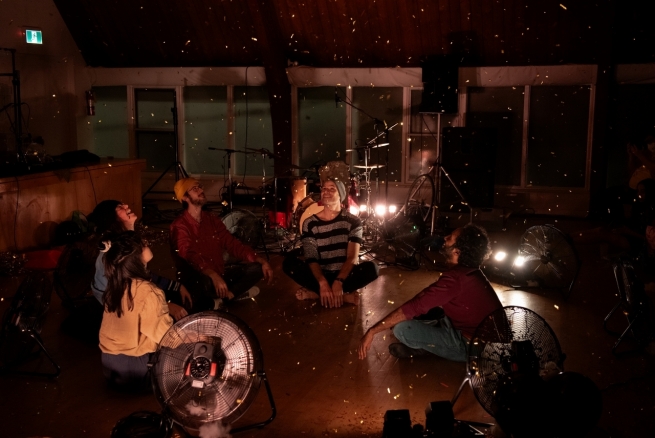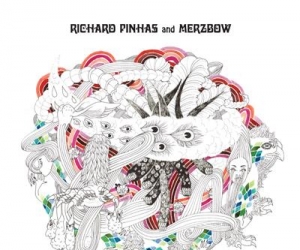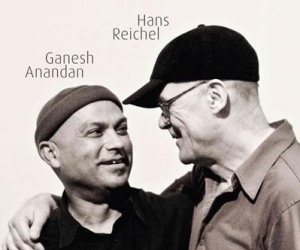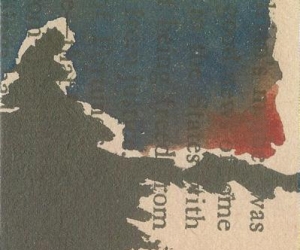
The glass walls of the Allan Gardens Children’s Conservatory did little to obscure a truth that had become evident to everyone packed in on a chilly Tuesday night in October: Fall had arrived, and with it total darkness by eight o’clock—that is, darkness subdued by the headlights of the surrounding traffic, which Toronto’s C.G. de Minico continued to look to during a set of crunchy, seemingly sample-heavy noise. It would become clear why afterward, when de Minico addressed the audience: “That was the sound of the park. That was the sound of everything around us right now.”
So began Synthesis, the opening event of the nineteenth edition of the Music Gallery’s X Avant festival, which this year was housed primarily at Toronto’s 918 Bathurst with brief turns at Allan Gardens and The Bridge for Friday’s Refraction, featuring a swarm of locals in support of Chicago’s Hieroglyphic Being. While sonic exploration still dominated, this year's festival flirted relentlessly with the performance practices of parallel artistic communities, mixing in programming co-presented by UKAI Projects, the Toronto Biennial of Art, and the legacy contemporary dance organization Dancemakers.
The monthly free-improvisation series Exit Points, which is helmed by artistic director Michael Palumbo, took over the second night—aptly named Diffuse—to host a listening party for the group’s new album, You Are the Right Length. Presented in twelve-channel surround sound, the album, alongside concert photography from Mike Filippov, Eugene Huo, Bryanna Reilly, and Stephen Humphrey in the adjoining gallery space, offered a fine distillation of the series’ last few years but couldn’t quite recreate the spontaneity central to their usual live ad hoc ensembles. Following the album, performances from Palumbo, Zoma, and Gayle Young made use of the spatialized audio setup. Young was a particular highlight, playing an instrument of her own design that I can only confidently describe as “having strings,” thanks to the audience’s positioning in two concentric circles with their backs toward her.
Similarly interested in breaking down the audience-performer barrier was Charles Spearin’s Music for 32 Phones Played Simultaneously on the festival’s opening night, which summoned up a soundscape through the speakers of the audience’s cellphones. It was not quite the ripest example of an audience activation: We required a vast amount of guidance from Spearin as we ambled around the room, and our inability to all hit “play” at the same time led to a few forced restarts.
On Thursday, the double bill of Weave Part 1 & 2 made the case for the inclusion of dance-adjacent practices in the festival programming. The longform movement work Mossbelly got the night going as a handful of dancers considered the longstanding question of how moss might dance. Uneasily, it seems, was the answer: crawling, sliding, and compulsively patting their own (and each other's) bodies, pausing to rest in log-like shapes. Artist Nyda Kwasowsky followed suit for the second event of the evening, producing a looping audio track underneath a cover of knotted kerchiefs before disconcertingly winding herself through the room to interact with bags of dirt, lengths of sugar cane, and a long braid unfurling from the ceiling.
Is the fact I’ve neglected to mention the theme of this year’s festival—texture—until now an accident, or have I been avoiding it because I can’t quite figure it out? It’s a broad enough theme to consider that it may be one of those half-hearted watchwords chosen because it can be applied to just about anything. Still, I can’t deny that under the scope of the term, there was a satisfying internal logic to the festival. I find myself wondering if musicians mean something specific when they use the word “texture,” something I am unaware of. In the aftermath of a performance from Portuguese musician Rafael Toral, the stranger I had been sitting next to gleefully said, “I loved it when he quoted Charlie Parker with the chickadees.” Forgive my memory here, it may have been a Duke Ellington quote, and the birds being sampled may have been white-breasted nuthatches. It was a useful insight into Toral’s work, which had, as a result of my poor bird call identification and a deficit of jazz bonafides, come close to something familiar (rock? jazz?) but was still totally inscrutable.
Texture, here, felt like a useful suggestion from the festival for dealing with its more opaque programming: A work will always have a surface, and there is nothing wrong with investigating how that surface might feel.
Top photo: Future Proof, part of the Refraction lineup at X Avant festival's closing night. Presented by the Music Gallery,at 918 Bathurst in Toronto on October 19, 2024.
Photo by Kevin Jones.


